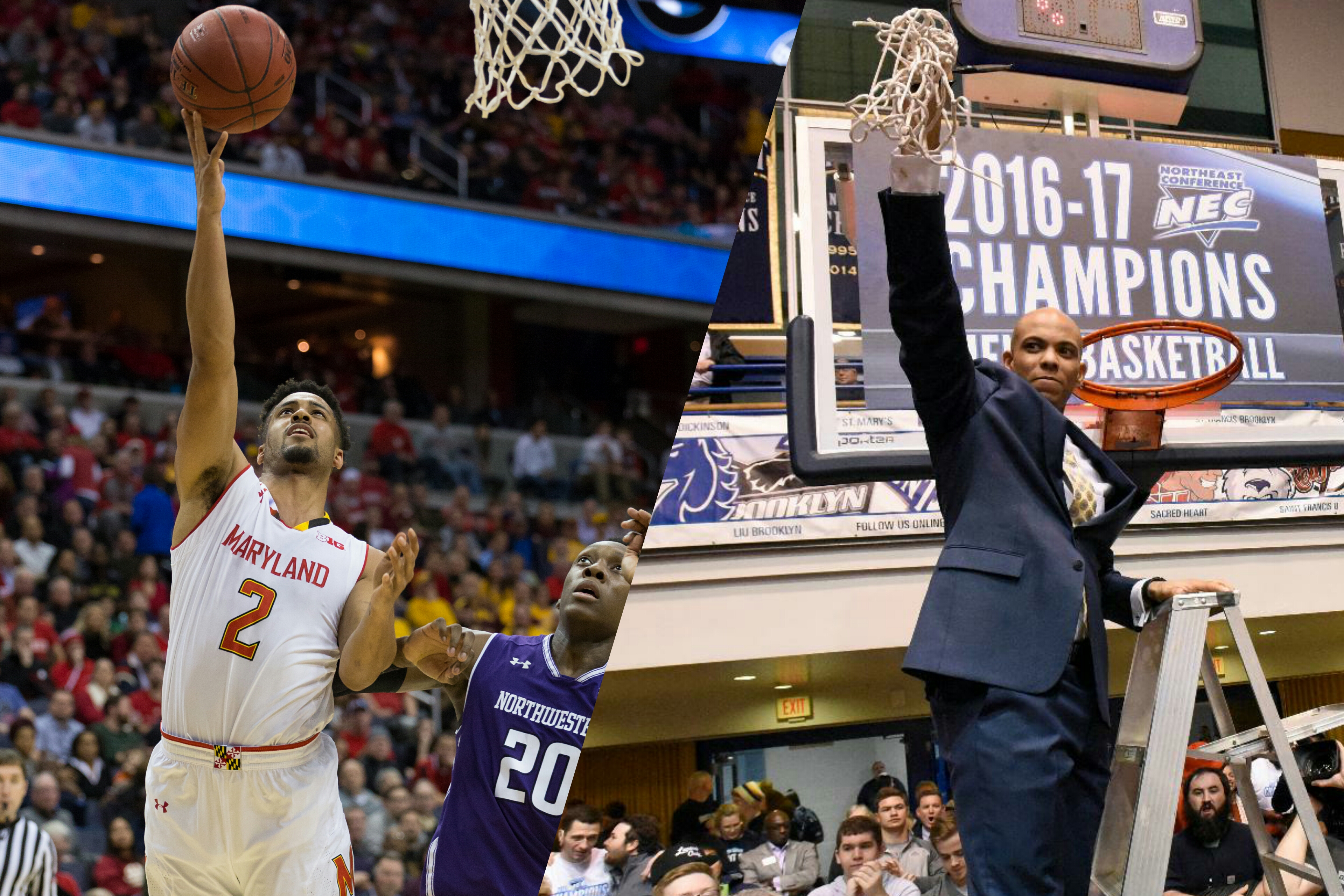Kyle McFadden (@k_fadd) | Twitter
The latest Tweets from Kyle McFadden (@k_fadd). Freelancer covering college sports, preps & #nascar. ?: @WashPostHS @BaltSunSports @frednewspost. @FrederickCC student. 2 Corinthians 12:1-10. Views=mine. New Market, MD
[Editor’s note: This article is the first installment of our 2017-18 college basketball preview, which will run up until opening night on Nov. 10. To access the rest of our coverage, click here.]
Maryland (24-9, 12-6 Big Ten)
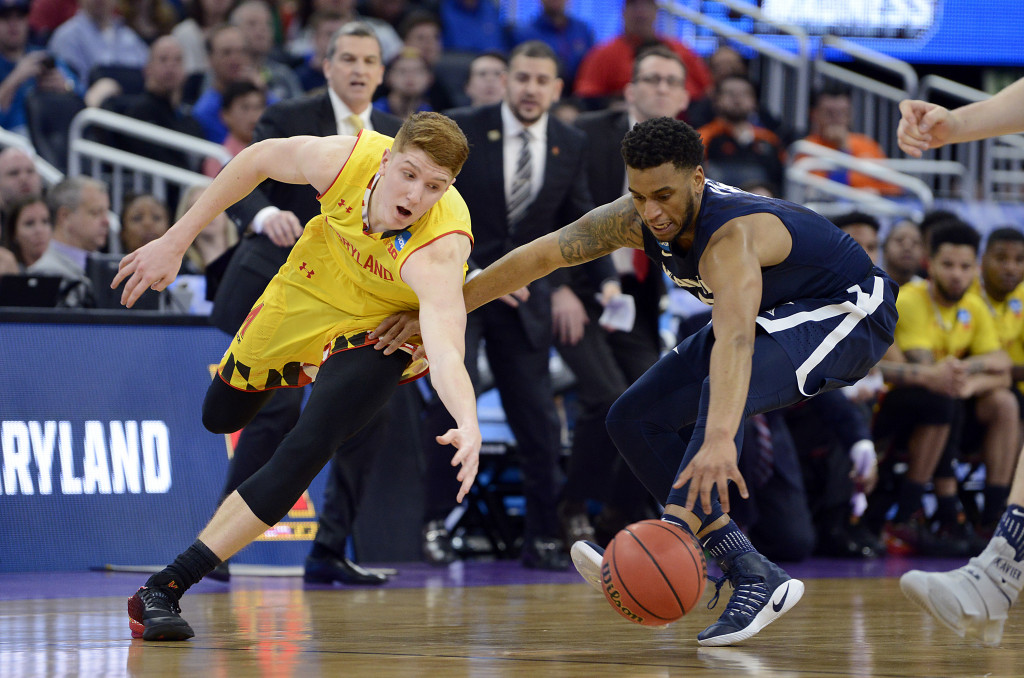
Best highlight: Melo Trimble, playing his last game at the XFINITY Center, provided a memorable send-off to a festive career on his final possession in College Park. Trimble, with 6.3 ticks on the clock, inbounded the ball to Justin Jackson on the other end of the floor, who then shuffled it right back to the junior point guard.
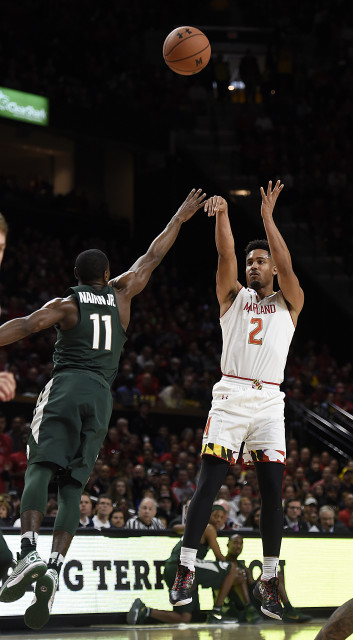
Trimble pushed down the floor and pulled up from just beyond the arc to drill the game-winning 3-pointer at the buzzer in a 63-60 win over Michigan State on March 4. Despite lackluster results in the postseason (3-3 record in the NCAA Tournament, 2-3 record in Big Ten tournament), Trimble brought zest back to the hoops scene in College Park with flashy heroics and a marketable brand of basketball.
Worst moment: Losing seven of its last 11 games, including the last two of the season — a 72-64 loss to Northwestern in the Big Ten tournament quarterfinals in D.C. and to 11th-seeded Xavier in the Round of 64 in the NCAA Tournament. Before the late-season fallout, Maryland had its best 22-game start in program history at 20-2. Fatigue likely played a hand, as three starters were freshmen and had never coursed a workload at that level before. Regardless of how you put it, the final six weeks of the 2016-17 season ended disappointingly and inauspiciously for a bunch that started with so much promise.
Leader in points, rebounds, assists, steals, blocks per game plus field goal percentage, free throw rate and 3-point percentage: Melo Trimble (16.8) … Justin Jackson (6.0) … Trimble and Anthony Cowan (3.7) … Cowan (1.2) … Michal Cekovsky (1.2) … Cekovsky (67.1 percent) … Jared Nickens (83.3 percent) … Jackson (43.8 percent)
Recap: Depending on perspective, last year’s season can be viewed in a multitude of ways. You could say that about most teams, but it especially applies to the 2016-17 Terps. They won 73 percent of their games in the aftermath of losing four of five starters and 65 percent of scoring, and not to mention three freshmen — Anthony Cowan, Kevin Huerter and Justin Jackson — were asked to presume the load.
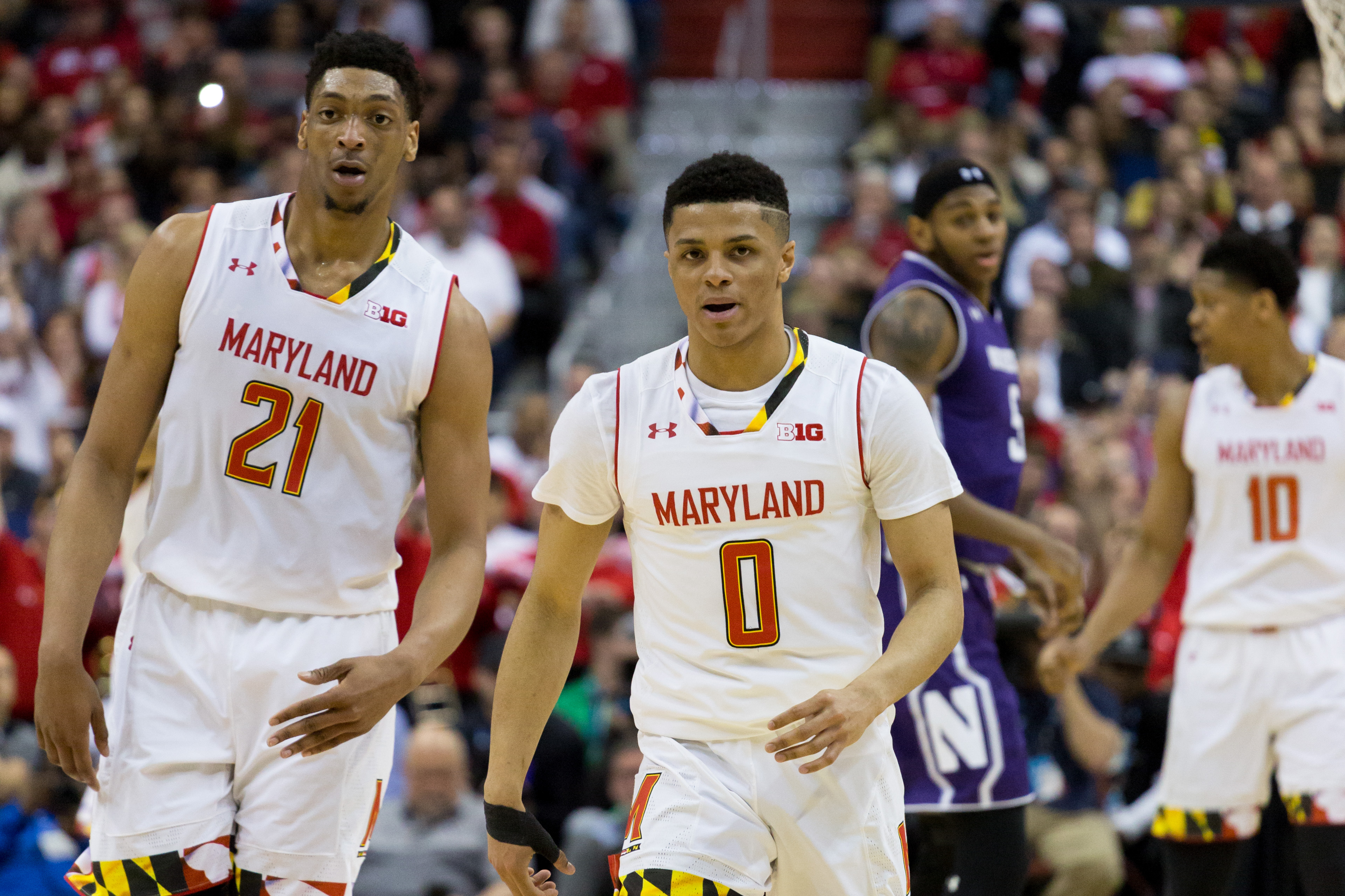
While Melo Trimble (32.1 minutes, 16.8 points, 3.7 assists a game) could have been more efficient (43.6 percent shooting, 31.7 percent from deep, 3.0 turnovers per contest), he showed the returners how to win, which should carry over for 2017-18.
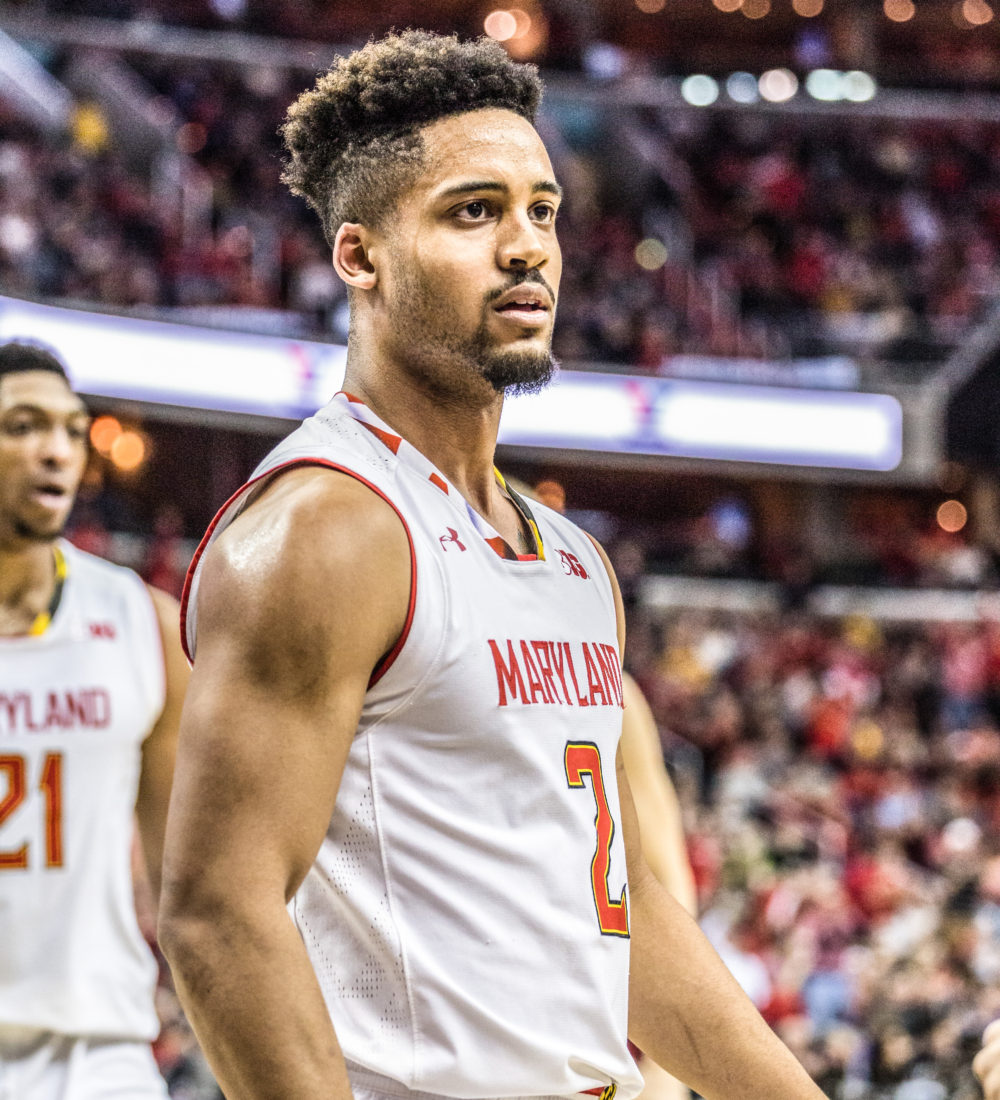
Cowan, Jackson and Huerter accounted for 41 percent of the scoring and flashed potential of playing at an elite level. You could say they overachieved or flopped, since they failed to win a postseason game after the best 22-game in program history. I think it’s a mixture of both, but I lean toward the overachieving side, since not too many people expected the loss column to stay in the single-digits.
Mount St. Mary’s (20-16, 14-4 NEC)

Best highlight: Do we have to pick just one? The 14-4 conference record, with the four losses by a combined 11 points, was a dominant stretch. The 78-76 overtime win at George Mason, when Chris Wray went coast-to-coast for the game-winning lay-in at the buzzer, could be considered as one of the biggest wins in program history since the Patriots were only a decade removed from a Final Four run. Winning eight straight conference games could easily be a ‘best highlight’ for other programs in the area. Trading blows with Villanova in a Round of 64 game and winning the institution’s second NCAA Tournament game in a 67-66 First Four victory over New Orleans is enough to be on its own pedestal. But the best highlight would have to be the Mount capturing the NEC title at home for the first time ever in front a standing-room only crowd.
Bonus highlight: I had driven up to Buffalo for the Mount’s Round of 64 game against No. 1 Villanova, an eight-hour haul off minimal sleep. Roughly a half an hour from tip-off, I moseyed back to the hallway that separated both locker rooms just because it was my only to get to the media work area. On my way back, I passed the entire Villanova team, and my first thought was, “Holy crap, they’re huge! The Mount are going to get shredded. Why did I drive this far for a bloodbath?” That’s all I thought about until tipoff, when the magical moment, unbeknownst to me, had begun.
Mount St. Mary’s Mountaineers guard Elijah Long is fouled by…
Mount St. Mary’s Mountaineers guard Elijah Long is fouled by Villanova Wildcats guard Josh Hart during the NCAA Division I Men’s Basketball Championship first round game between Mount St. Mary’s… Get premium, high resolution news photos at Getty Images
The Mount jumped out to a 7-0 lead and held the Wildcats scoreless in the opening six minutes. Every time Villanova brought it to one possession, the Mount answered. Every time Villanova dropped a bucket to cut the deficit, the Mount responded. The Mount led the first 19:56, before Villanova’s Jalen Brunson gave the ‘Cats a 30-29 halftime lead. Villanova eventually rattled off a 21-4 run to take a 51-35 lead with 12:25 to go, but the Mount never went away and trailed by 11 with just seven minutes to go. Unfortunately, coming away empty on 12 of its final 18 possessions dashed the chance of a 16-seed upsetting a top seed for the first time in NCAA history.
Worst moment: Losing to Central Connecticut — the worst team in the NEC — 54-52, at home on February 4, which halted their eight-game win-streak and any likelihood of earning a 15-seed in the NCAA Tournament.
Leader in points, rebounds, assists, steals, blocks per game plus field goal percentage, free throw rate and 3-point percentage: Elijah Long (15.0) … Chris Wray (5.7) … Long (4.4) … Long (1.6) … Wray (1.5) … Ryan Gomes (61.1 percent) … Junior Robinson (86.8 percent) … Robinson (39.8 percent)
Recap: Mount St. Mary’s, picked to finish fifth in the preseason poll, rose from a murky cloud of uncertainty to roll through the NEC conference without much resistance. After going through the ninth toughest non-conference schedule in the nation, per KenPom, and starting 2-11, the Mount found its footing and won the next 19 of 24.
Elijah Long (34.4 minutes, 15.0 points, 5.2 rebounds, 4.4 assists, 1.6 steals per game), Miles Wilson (28.9 minutes, 11.3 points, 3.9 rebounds a game) and Mawdo Sallah (20.2 minutes, 6.1 points, 5.3 rebounds, 1.1 blocks per game) all blossomed into key assets before being poached by Power 5 programs — Long, the leader in points and assists, is now at Texas. Wilson, who averaged 18 points in the Mount’s final three games of the season, is off at Miami. Sallah, who averaged six points and five rebounds a game, will suit up for Kansas State this winter. The continuity of Junior Robinson (33.3 minutes, 14.1 points, 2.9 assists, 39.8 percent from deep per game), Greg Alexander (26.0 minutes, 7.7 points, 36.2 percent from deep per game), Ryan Gomes (6.5 minutes, 2.2 points, 61.1 percent shooting per game) Long, Wilson and Sallah formed one of the most intriguing mid-major rotations in the country.
While the 2017-18 team will look completely different, last year’s Mount team gave the Emmitsburg faithful memories for a lifetime: The regular season title, the NEC tournament title at home, an NCAA tournament win and a breathtaking bout with the defending national champs.
UMBC (21-13, 9-7 America East)
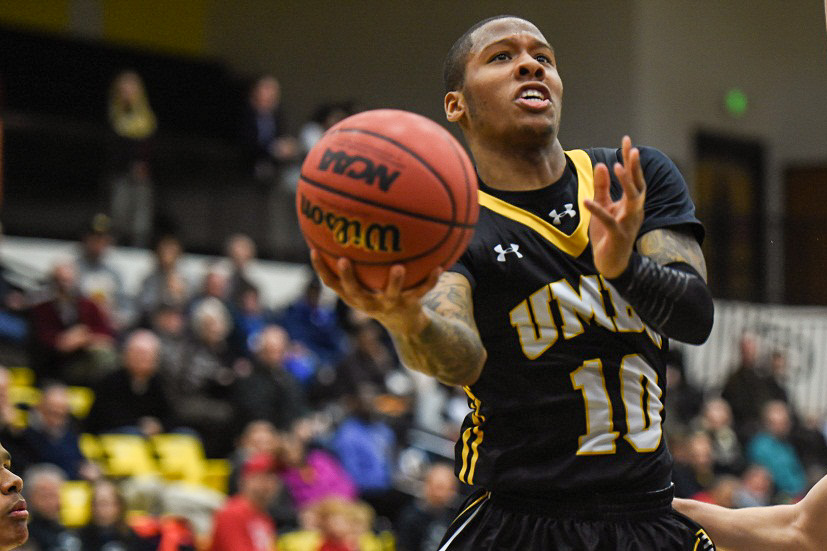
Best highlight: Winning the program’s first post-season NCAA Division I tournament game in the 88-83 victory over Fairfield in the CIT. It was UMBC’s 19th win of the year and, at the time, tied them for third most wins in a single season since 1988-89. They eventually won two more games in the CIT to reach the 21-win plateau, which became the second most wins in program history.
Worst moment: Squandering a 15-point second-half lead to rival Towson. With recruiting implications and bragging rights on the line, the Retrievers blew a golden opportunity to one-up their cross-city rivals, losing 73-72.
Leader in points, rebounds, assists, steals, blocks per game plus field goal percentage, free throw rate and 3-point percentage: Jairus Lyles (18.9) … Lyles (6.6) … K.J. Maura (4.6) … Maura (1.8) … Sam Schwietz (0.8) … Schwietz (63.3 percent) … Max Curran (93.3 percent) … Joe Sherburne (45.0 percent)
Recap: Rookie coach Ryan Odom, the 2017 Joe B. Hall recipient for the top first-year coach in Division I, flipped a seven-win UMBC team into a 21-win team with a high-octane offense that finished 25th in the nation. After finishing 7-25 in 2015-16, Odom led UMBC (21-13) to its first winning season since 2007-08, when the Retrievers went to the NCAA Tournament. The 21 wins are the second most in school history and UMBC finished the year as the nation’s third-most improved team, with a plus-13.0 mark, behind only Minnesota and UCLA. Despite the landmark season, UMBC finished fifth of nine teams in the America East conference. But they did obtain a feat that hasn’t been accomplished before in the America East: Win three postseason games.
Towson (20-13, 11-7 CAA)
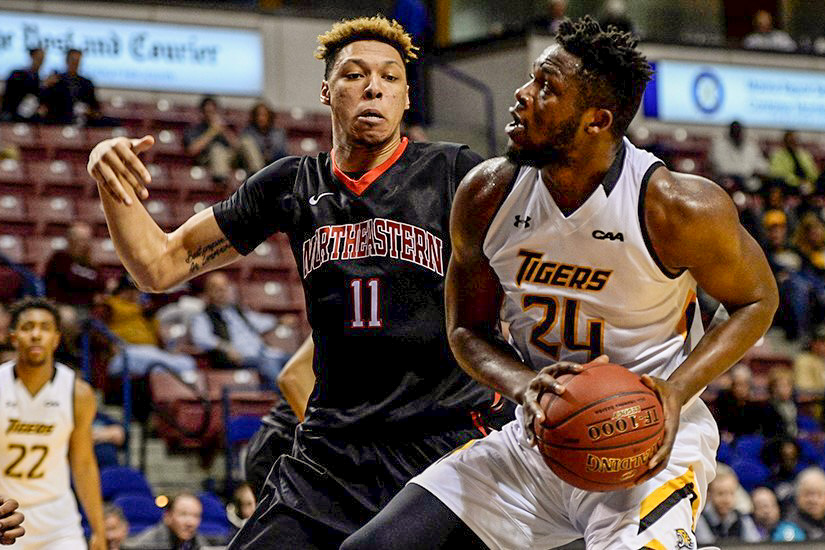
Best highlight: Erasing a 15-point second-half deficit to defeat cross-city rival UMBC, 73-72. It also marked the third win in three games against Baltimore opponents, a tactical tool that can be used for recruiting. And it’s also worth mentioning they went toe-to-toe with the University of Maryland, but came just short on the road, 71-66.
Worst moment: Letting a halftime lead in the CAA semifinals slip away. Towson was up by five over Charleston at the break, and couldn’t close the deal down the stretch. The win would’ve put the Tigers 40 minutes away from an automatic bid into the NCAA tournament, where they could’ve gone to the dance for the first time since 1991.
Leader in points, rebounds, assists, steals, blocks per game plus field goal percentage, free throw rate and 3-point percentage: Mike Morsell (13.4) … John Davis (7.6) … Deshaun Morman (2.0) … Morman (1.5) … Alex Thomas (0.7) … Dennis Tunstall (82.8 percent) … Morsell (76.5 percent) … Eddie Keith II (42.1 percent)
Recap: Last season was full of peaks and valleys for Towson. They started the season with two key wins against backyard recruiting foes in George Mason and Morgan State. After that, the Tigers had Maryland — yes, the University of Maryland — on the ropes in the second half, up 13 with 14 minutes to go. Though they eventually lost by five, it was a promising 40 minutes. Wins against Loyola and UMBC ensued before they stumbled into a funk and lost its first four conference games. Towson bucked the slippage and won its next 11 of 12, but ran out of gas and lost its last three of four, including the CAA semifinals in which they let a halftime lead slip away.
Towson (20-13), which played a top-100 schedule, won 20 games for the second straight year, a feat accomplished for the first time as a Division I program. The Tigers also rallied from five double-digit deficits for wins and triumphed a pair overtime thrillers. They also were on of the best rebounding teams in the nation and attempted more free throws than any other program nationally (813 in 33 games).
George Washington (D.C.) (20-15, 10-8 A-10)
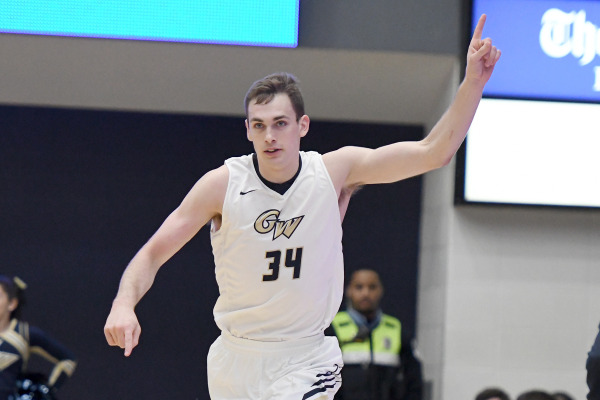
Best highlight: The 87-81 win over A-10 regular season champion Dayton, which earned a No. 7 seed in the NCAA tournament. Tyler Cavanaugh hit six 3-pointers and scored 30 points to stunt the Flyers’ nine-game winning streak.
Worst moment: A turnover with 5.8 seconds left, trailing 68-67 in the A-10 quarterfinals against Richmond, which smothered NCAA tournament hopes. All George Washington needed was one more clean possession and a bucket to keep its chances at reaching the big dance alive. But when the Colonials heaved the under-the-basket pass to Yuta Watanabe, who tried to make something happen, the ball was picked away and Richmond iced the game with a fastbreak lay-in.
Leader in points, rebounds, assists, steals, blocks per game plus field goal percentage, free throw rate and 3-point percentage: Tyler Cavanaugh (18.3) … Cavanaugh (8.4) … Jaren Sina (3.3) … Yuta Watanabe (1.1) … Watanabe (1.1) … Patrick Steeves (48.2 percent) … Matt Hart (87.5 percent) … Hart (42.5 percent)
Recap: The Colonials recorded their fourth-straight 20-win season with a roster that included eight newcomers. Tyler Cavanaugh was one the nation’s top bigs, averaging 18.3 points and 8.4 rebounds a contest. George Washington never fell below .500 on the season, and when they dropped its ninth contest during a 14-game stretch to fall to 13-13, they responded with a six-game winning streak. They also played in its fourth straight postseason tournament.
Navy (16-16, 10-8 Patriot)
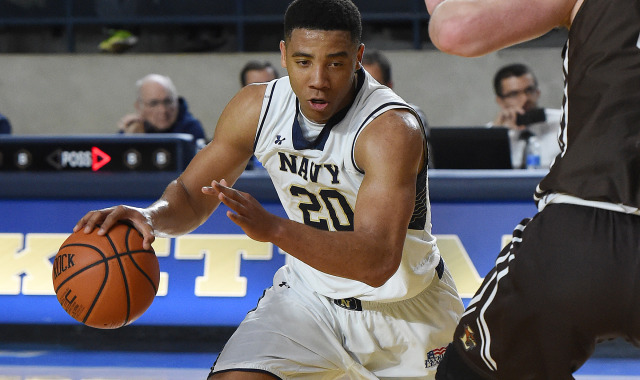
Best highlight: Eight-game winning streak in league play. After dropping the first three games of Patriot League competition, Navy rattled off wins against Colgate, Loyola, Lafayette, Lehigh, archrival Army, American, Holy Cross and Boston to move from 5-10 to 13-10.
Worst moment: Squandering a 25-point lead with 12 minutes left against Army to lose 71-68. Navy was outscored 42-14 down the stretch in what could go down as one of the worst collapses in Maryland college basketball history.
Kyle McFadden on Twitter
Collapse complete: Navy squanders 25-point lead with 12 minutes left as Army takes a wild one at the USNA, 71-68.
Leader in points, rebounds, assists, steals, blocks per game plus field goal percentage, free throw rate and 3-point percentage: Shawn Anderson (12.2) … Tom Lacey (7.6) … Hasan Abdullah (3.3) … Abdullah (1.9) … Edward Alade (0.4) … James Hemphill (69.3 percent) … George Kiernan (77.4 percent) … Bryce Dulin (41.3 percent)
Recap: Seventh-year head coach Ed DeChellis guided Navy to a 16-16 overall record last season and a 10-8 mark in the Patriot League. The Mids advanced to the Patriot League tournament semifinals for the first since 2001, where they fell to eventual league champion Bucknell, 70-65. Navy increased its conference win total for the fifth straight season under DeChellis.
Loyola (16-17, 8-10 Patriot)

Best highlight: Defeating league champion Bucknell, 78-77, on February 15.
Worst moment: Losing five of its last seven games, including a loss to league-worst American, which tarnished a winning season.
Leader in points, rebounds, assists, steals, blocks per game plus field goal percentage, free throw rate and 3-point percentage: Andre Walker (14.9) … Cam Gregory (7.6) … Walker (3.9) … Walker (1.5) … Jarred Jones (1.1) … Gregory (63.8 percent) … Nick Gorski (100 percent) … Andrew Kostecka (38.6 percent)
Recap: Last year wasn’t exactly a winning season for the Greyhounds, but they did manage 16 wins, their most since 2012-13 when they went 23-12. While its defense ranked in the top 75 nationally, Loyola’s offense was considered as one of the worst in terms of offensive efficiency — shooting 42 percent overall and ranking 320th out of 350-plus Division I teams in points per game. They also had nearly half their schedule decided by two possessions, going 8-7 in contests determined by six points or less. The Greyhounds proved they can hang with anyone in the Patriot League, defeating runner-up Lehigh in both meetings and downing league champion Bucknell at home.
Morgan State (14-16, 11-5 MEAC)

Best highlight: Finishing third in the MEAC at 11-5, two games behind league champion North Carolina Central. At the beginning of the season, Morgan State’s identity was largely unknown. The season could have gone many ways, but a top three finish in the conference should buoy a team that brings back a host of impact players this season.
Worst moment: Getting upset by Howard (D.C.) in the first round of the MEAC conference tournament, 68-65. The Bears accumulated the third best conference record in 2016-17 and had NCAA tournament hopes at the doorstep, but it all unraveled in a matter of 40 minutes against the 11th-seeded Bison.
Leader in points, rebounds, assists, steals, blocks per game plus field goal percentage, free throw rate and 3-point percentage: Tiwian Kendley (21.0) … Phillip Carr (9.6) … Martez Cameron (4.3) …
Recap: Uncertainty clouded Morgan State and coach Kent Bozeman in the early months of the 2016 summer. With so many new faces and untested pieces, how will things shake out for the Bears in 2016-17? Will it be another year of single-digit wins, or will Morgan State return to prominence? Despite many streaky stretches, the Bears showed the program is headed in the right direction with a third-place finish in the MEAC. All of their conference wins came in bunches — two four-game win-streaks and a three-game win-streak. They also had two four-game losing streaks and a three-game losing streak along the way. Tiwian Kendley emerged as one of the country’s most dynamic scorers, averaging 21 points game, and Phillip Carr nearly averaged a triple-double a contest (16.6 points, 9.6 rebounds). Morgan State returns the duo this winter.
Georgetown (D.C.) (14-18, 5-13 Big East)
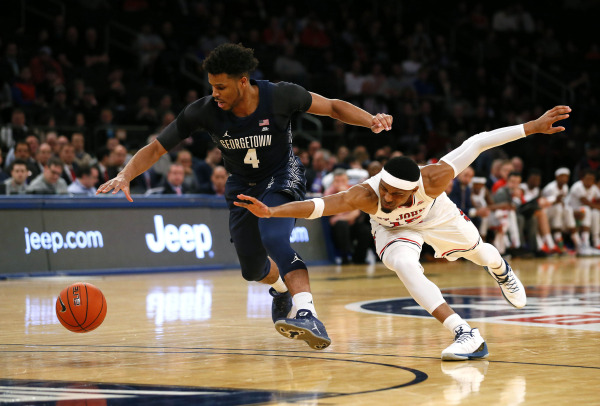
Best highlight: Win at No. 11 Butler, 85-81, on January 28, three days after defeating No. 16 Creighton by 20. After starting conference play 1-5, the Hoyas and soon-to-be-fired coach John Thompson III came through in the face of scrutiny. There’s not much to savor from a year ago, but if Hoya nation had to pick a memorable highlight, this four-day stretch would be the most appropriate.
Worst moment: Losing to St. John’s in the first round of the Big East tournament, 74-73, which marked the sixth straight loss to end a chaotic 2016-17 season for the Hoyas.
Leader in points, rebounds, assists, steals, blocks per game plus field goal percentage, free throw rate and 3-point percentage: Rodney Pryor (18.0) … Jessie Govan (5.0) and Pryor (5.0) … L.J. Peak (3.5) … Peak (1.1) … Govan (1.0) … Bradley Hayes (53.4 percent) … Akoy Agau (85.1 percent) … Pryor (41.2 percent)
Recap: The John Thompson III era finally bottomed-out in the Nation’s Capital. And it was a long time coming for a program that seemed stuck in the mud, coming off its second consecutive losing season. Fans booed Thompson III off the court as the losses added. Attendance dwindled as the season puttered on, exactly one decade removed from the last time they advanced past the second round of the NCAA tournament. Yeah, it’s been that long. Thompson III finished second-to-last in the Big East and went out with a six-game losing streak. Rodney Pryor and L.J. Peak averaged 18 points and 16.3 a game, respectively. Center Jessie Govan blossomed into an asset in the frontcourt at 10.1 points and five boards a night. Through the bungle, Georgetown did manage to win three games against ranked opponents — No. 13 Oregon (65-61, Nov. 21), No. 16 Creighton (71-51, Jan. 25) and No. 11 Butler (85-81, Jan. 28).
Maryland Eastern Shore (14-20, 9-7 MEAC)
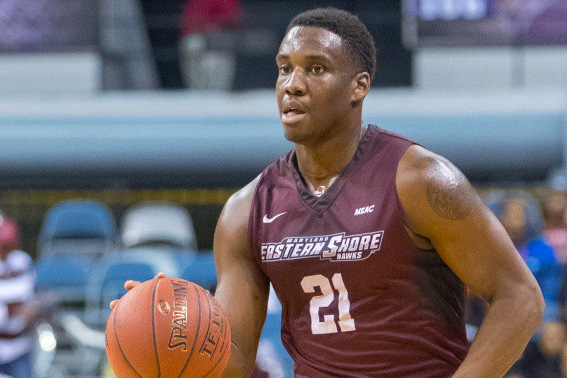
Best highlight: Upsetting fourth-seeded Hampton in the MEAC quarterfinals, 68-66. It was the first time the Hawks won two games in the conference tournament since the 1973-74 season and was the first conference semifinal appearance since the 1993-94 season.
Worst moment: Losing to Howard (D.C.) twice, one of the worst teams in the MEAC.
Leader in points, rebounds, assists, steals, blocks per game plus field goal percentage, free throw rate and 3-point percentage: Bakari Copeland (17.3) … Copeland (6.2) … Logan McIntosh (4.2) … McIntosh (0.9) … Peck (1.3) … Peck (66.4 percent) … Ryan Andino (83.7 percent) … Copeland (40.9 percent)
Recap: After a 1-11 start in a tough non-conference schedule, the Hawks were able to regather themselves for a 13-9 finish down the stretch. Nothing flashy occurred in a middle-of-the-pack finish in the MEAC, but they were able to upset Hampton in the conference quarterfinals to make the program’s first conference semifinal appearance in 23 years.
Howard (D.C.) (10-24, 5-11 MEAC)
Best highlight: Knocking off seventh-seeded Coppin State and third-seeded Morgan State in the MEAC tournament on its unlikely run to the conference semifinals. After finishing toward the bottom of the conference in regular season play, the Bison mustered up some upset magic in the conference tournament and nearly advanced to the winner-take-all game.
Worst moment: Losing 12 times over a 14-game stretch that spanned a month a half.
Leader in points, rebounds, assists, steals, blocks per game plus field goal percentage, free throw rate and 3-point percentage: Charles Williams (15.6) … Soloman Mangham (7.1) … Damon Collins (2.7) … James Miller (1.5) … Marcel Boyd (0.8) … Jalen Jones (58.3 percent) … Williams (75.9 percent) … Williams (34.2 percent)
Recap: Not a whole lot went right for Howard last year, which lost the nation’s leading scorer from 2015-16 in James Daniel to injury just two games into the season. The Bison started painfully slow and shot just 39 percent as a team, but they ended on a positive note with two upset wins in the MEAC tournament. Freshman Charles Williams averaged a team-high 15.6 points per game and a team-best 34 percent from deep, giving the Bison hope for the future.
American (D.C.) (8-22, 5-13 Patriot)
Best highlight: Win against Navy on February 22, 74-58. Freshman Sa’eed Nelson continued his strong freshman campaign with 19 points and four steals against the Patriot League’s third-best team.
Worst moment: Losing 12 of 14 games over a six-week span from January 5 to February 19, falling from 4-9 (1-2) to 6-21 (3-13).
Leader in points, rebounds, assists, steals, blocks per game plus field goal percentage, free throw rate and 3-point percentage: Sa’eed Nelson (14.9 points) … Charlie Jones (6.0) … Nelson (2.7) … Nelson (2.4) … Jones (0.6) … Jones (55.1 percent) … Lonnie Rivera (89.5 percent) … Alex Paquin (43.8 percent)
Coppin State (8-24, 7-9 MEAC)
Best highlight: Three-game winning streak to move to 4-1 in conference play on January 16.
Worst moment: Losing the first 12 games of the season.
Leader in points, rebounds, assists, steals, blocks per game plus field goal percentage, free throw rate and 3-point percentage: Chas Brown (12.4) … Brown (7.1) … DeJuan Clayton (3.1) … Keith Shivers (1.2) … Brown (0.9) … Brown (56.2 percent) … Terry Harris Jr. (78.8 percent) … Lucian Brownlee (42.7 percent)


